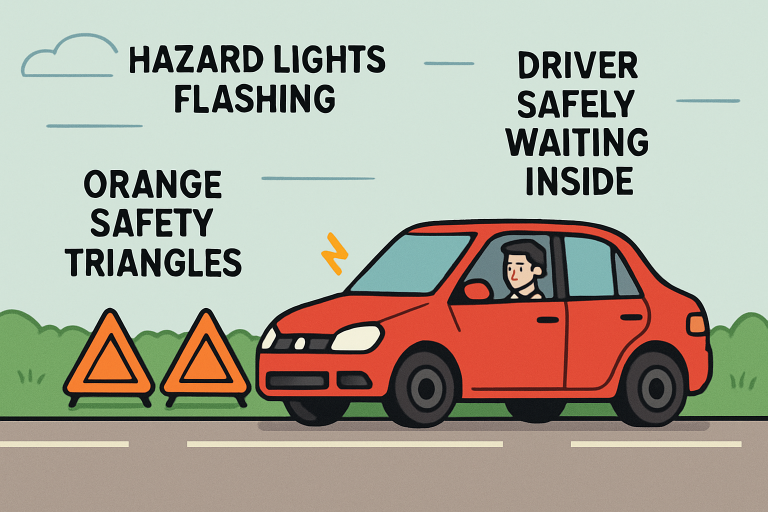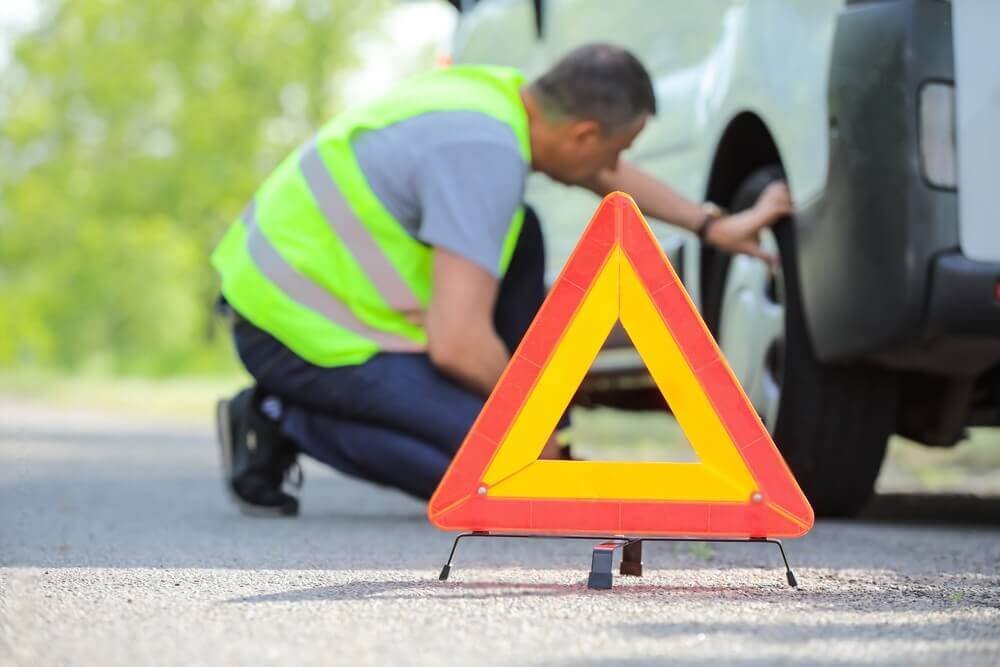Introduction
Vehicle breakdowns are an unfortunate reality that every driver may face at some point, regardless of how prepared or experienced they might be. Whether embarking on a cross-country adventure or simply commuting in your neighborhood, encountering a mechanical failure, flat tire, or dead battery can be stressful and inconvenient. That’s why understanding the importance of a reliable roadside assistance plan cannot be overstated. Having the right policy instills confidence and peace of mind and provides a safety net when unexpected issues arise. When shopping for the best roadside assistance insurance, it’s vital to compare available options carefully—look into features, costs, and levels of coverage—to ensure you select the plan that best fits your driving habits and vehicle needs. By equipping yourself with knowledge and preparation, you can protect yourself, your passengers, and your investment, minimizing stress and ensuring smoother outcomes during roadside emergencies.
Preparation goes beyond knowing whom to call in a crisis; it extends to ensuring you have the right tools, emergency supplies, and crucial information within easy reach. Whether it’s a well-stocked emergency kit, an up-to-date roadside assistance membership, or saving helpful apps on your phone, advanced planning transforms daunting situations into manageable ones. This guide presents comprehensive roadside assistance tips to empower every motorist—from understanding the fine print of your coverage to utilizing the latest technology for swift help, and staying ahead of typical car troubles through preventive care.
Understand Your Roadside Assistance Coverage
Before you ever find yourself stranded by the side of the road, take a proactive approach by thoroughly understanding your roadside assistance plan. Each plan varies significantly, not just by provider but by tier. Some only provide basic towing, while others deliver a comprehensive suite of services, including battery jump-starts, locksmith services, flat tire changes, fuel deliveries, and even trip interruption benefits, such as covering lodging if you’re far from home. Closely review the limitations: are there caps on service calls per year, or restrictions based on towing mileage or vehicle type?
Carrying digital and paper copies of your policy and roadside assistance provider’s contact details is a best practice—store these in your glove box and save the provider’s number in your phone for quick access. Being able to reference your coverage terms during a stressful moment quickly can make the difference between swift recovery and unnecessary delays or expenses. If you’re uncertain where to start, Forbes’ review of the best roadside assistance insurance plans introduces highly rated options, helping you find coverage tailored to your travel patterns and budget. Investing a little time upfront to learn about and secure an appropriate plan makes breakdown recovery more seamless and less daunting.
Prioritize Safety During a Breakdown
Nothing matters more than personal safety during a roadside emergency. Even if a vehicle breakdown can feel chaotic, remaining calm and following set procedures keeps everyone out of harm’s way. The first step is to activate your hazard lights—this alerts drivers to your stationary vehicle, providing crucial warning, especially in low-visibility conditions or at night.
- Activate Your Hazard Lights: Turn them on as soon as you realize there’s an issue, regardless of the time or road type.
- Move to a Safe Location: If your car is drivable, steer to the shoulder or a well-lit, less-trafficked area away from speeding vehicles. Always be aware of your surroundings, and never attempt to push a vehicle on a busy road by yourself.
- Remain in the Vehicle: Unless you detect hazards such as fire, smoke, or leaking fluids, it’s safest to stay inside your vehicle with seat belts fastened—especially if you’re stuck near fast-moving highways or in dangerous weather conditions.
- Deploy Warning Devices: If possible, set up reflective triangles or road flares, placing one about 10 feet and another 100 feet behind your car. These devices make you far more visible to other motorists, drastically reducing the risk of secondary accidents or injuries.
Sticking to these protocols can be lifesaving. Ensuring your vehicle and those with you remain visible and protected preserves your safety and that of other roadway users while you wait for professional assistance to arrive.

Prepare an Emergency Kit
No driver should be without a thoughtfully assembled emergency kit, as even minor breakdowns can keep you waiting for assistance longer than expected, especially during severe weather or in remote locations. Equip your kit with:
- Heavy-duty jumper cables to restart dead batteries
- A complete spare tire, jack, and lug wrench for changing flats
- A well-stocked first-aid kit with bandages, antiseptics, and necessary medications
- Powerful flashlight with additional batteries for nighttime emergencies
- Reflective triangles, high-visibility vests, and road flares for enhanced visibility
- A basic toolkit including screwdrivers, pliers, an adjustable wrench, and a multi-tool
- Warm blanket, gloves, and a poncho for unforeseen weather changes
- Non-perishable snacks and bottled water for sustenance during long waits
- A portable phone charger or power bank to keep your devices operable
Review and refresh your emergency kit every season or at least twice a year; update food and water supplies, check the expiration dates on medications, and replace batteries as needed. This manual approach to preparedness ensures you have what you need—regardless of when or where trouble occurs—giving you greater control over stressful scenarios.
Leverage Technology for Assistance
In today’s digital age, technology can be your greatest ally when stranded on the roadside. Major providers, such as the ones listed in this Consumer Reports roadside assistance guide, offer mobile apps that streamline the process of requesting service. These apps allow you to send your location using your smartphone’s GPS. These apps often provide updates on your technician’s arrival, store your membership or policy details, and enable real-time text communication for swift coordination.
Navigation and mapping apps and dedicated location-tracking tools let you quickly inform both roadside assistance teams and your chosen emergency contacts of your precise whereabouts. Many plans feature live tracking, so you know when help will arrive. For further peace of mind, some innovative providers offer automatic crash detection, quick check-ins, and text alerts—features which can transform a stressful roadside ordeal into a transparent and manageable experience. To maximize these benefits, ensure all relevant apps are installed and updated before embarking on any trip, and test their functionality periodically to avoid any technical glitches in a real emergency.
Perform Regular Vehicle Maintenance
One of the most effective ways to reduce your risk of roadside breakdowns is to stay diligent with preventative vehicle maintenance. Regularly inspecting and servicing your car—checking fluid levels, monitoring battery health, ensuring tires are properly inflated and have adequate tread, and confirming that all lights are operational—can significantly reduce avoidable failures. Following the manufacturer’s maintenance schedule for oil changes, brake checks, and other key milestones is equally essential.
Consider maintaining a digital or paper log that details every inspection, repair, and maintenance item performed on your vehicle. This organized approach helps you spot patterns, such as recurring issues or overdue services, but also aids in preserving your car’s value. If you’re driving a newer car equipped with sensors and warning lights, don’t ignore alerts—promptly addressing even minor issues prevents escalation into significant problems. For more tips on car upkeep, visit Consumer Reports’ guide on choosing a roadside assistance plan. Ultimately, ongoing vehicle care is an investment in your safety, wallet, and travel plans, minimizing the likelihood of being stranded at the worst possible moment.
Key Takeaways
- Carefully review and understand the limits and features of your roadside assistance plan before you travel.
- Prioritize safety by signaling distress, moving to a secure area, and making yourself visible with emergency devices.
- Assemble and regularly update a detailed emergency kit to handle common roadside emergencies comfortably.
- Use smartphone technology and assistance apps to expedite service and inform all parties in real time.
- Perform regular, manufacturer-recommended maintenance for long-term reliability, safety, and prevention of unexpected breakdowns.
By implementing these strategies and choosing the right roadside assistance insurance for your needs, you’ll have the knowledge and tools to confidently address any roadside challenge and enjoy safe, worry-free journeys wherever the road may lead.








